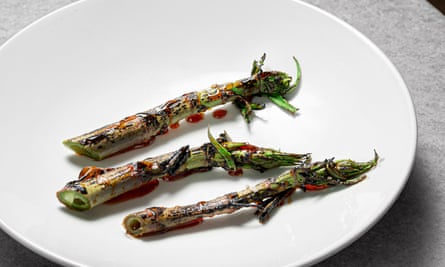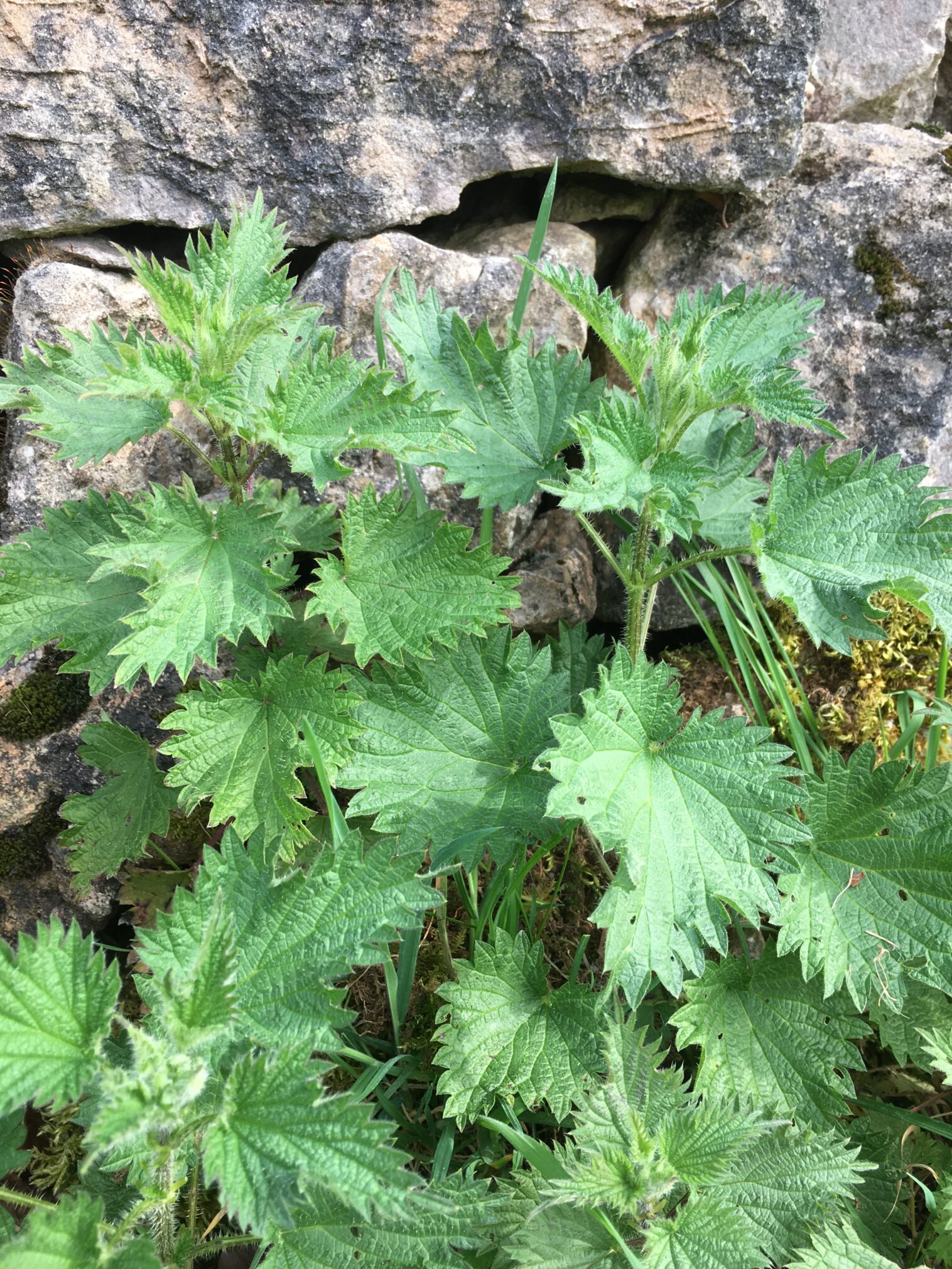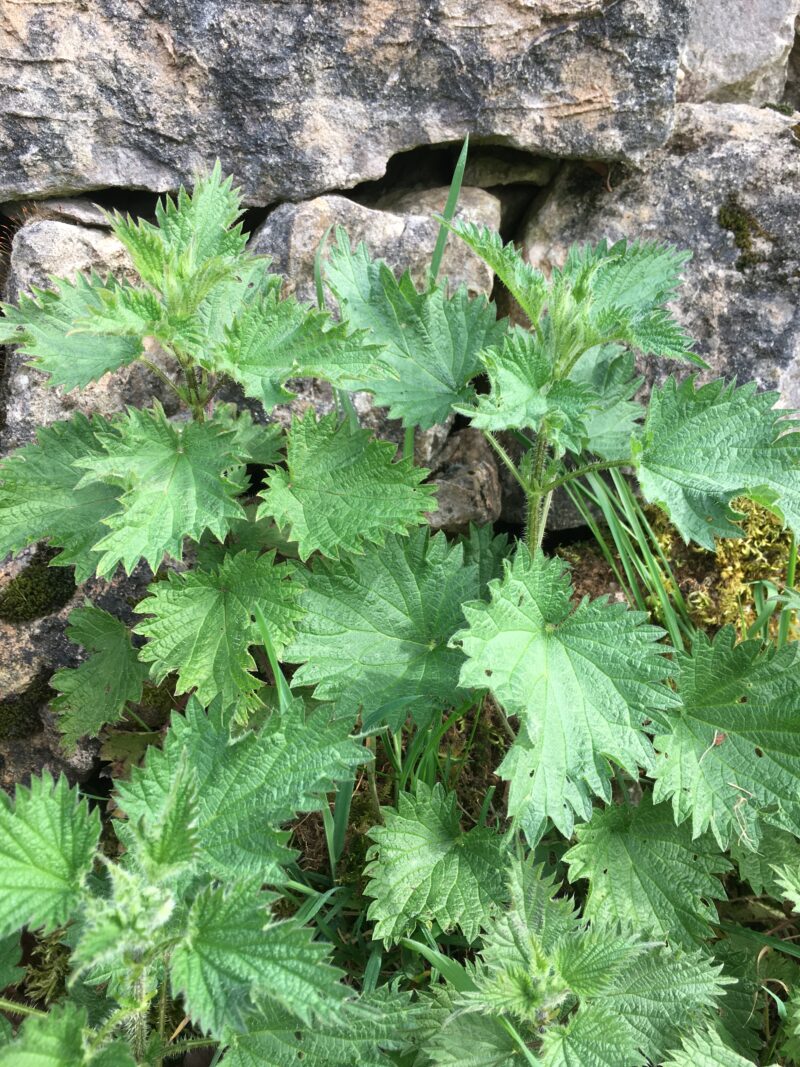The rise of ‘invasivorism’ has introduced a range of unusual eating choices as diners strive for a more ethical diet. Sat 27 May 2023
It can be grilled like asparagus, mixed into a sweet-sour ripple ice-cream or even turned into a beer. When guests arrive at Silo, a “zero-waste” restaurant in east London, next month they’ll be treated to a series of dishes from an unlikely source. It is more famous as the scourge of homeowners, but for some, the solution to the Japanese knotweed crisis is to serve it for dinner.
Squirrel haggis and Japanese knotweed reach UK menus as invasive species trend grows
The rise of ‘invasivorism’ has introduced a range of unusual eating choices as diners strive for a more ethical diet. Sat 27 May 2023
It can be grilled like asparagus, mixed into a sweet-sour ripple ice-cream or even turned into a beer. When guests arrive at Silo, a “zero-waste” restaurant in east London, next month they’ll be treated to a series of dishes from an unlikely source. It is more famous as the scourge of homeowners, but for some, the solution to the Japanese knotweed crisis is to serve it for dinner.
Eating invasive species – called “invasivorism” – is increasingly fashionable as people search for ethical diets. In London, at The Ninth in Fitzrovia, three-cornered leek, a milder version of wild garlic, has been whipped into aioli, while at Native in Mayfair it is used alongside asparagus. At Seasonality in Maidenhead you can tuck into muntjac deer tartare, while Edinburgh’s The Palmerston uses sika deer extensively.
Also in Edinburgh, chef Paul Wedgwood of Wedgwood the Restaurant has had squirrel on the menu since 2008, most famously in squirrel haggis. “It’s mellow, nutty and a bit gamey, and can be substituted for rabbit,” says Wedgwood, who occasionally uses Japanese knotweed and three-cornered leek.
Silo is to hold a series of dinners this summer to highlight the issue. Douglas McMaster, the owner and chef of the Hackney Wick restaurant, cut his chops at several Michelin-starred restaurants: London’s St John, Heston Blumenthal’s the Fat Duck and Noma in Copenhagen.
The events will feature guest chefs including celebrity chef and campaigner Hugh Fearnley-Whittingstall, who will be challenged to create a menu using Himalayan balsam, and Skye Gyngell of Spring at Somerset House. The first dinner sees chef Matt Orlando, who previously used Japanese knotweed at Amass in Copenhagen, tackling the problematic plant.

Invasive species often wreak havoc on the local environment: according to a 2021 study by Queen’s University Belfast they have caused almost £900bn of damage across the globe since the 1960s. American signal crayfish, introduced to Britain in the 1970s, have outcompeted native crayfish and can erode riverbanks. Their flavour is likened to lobster, and they’re a prized delicacy in America’s deep south. And four of Britain’s deer species – sika, Chinese water, muntjac and even fallow – are non-native and a lack of natural predators has allowed their populations – along with native deer – to expand exponentially, harming local fauna.
“Not only is eating invasive species a solution, but we’re taking pressure off the food system, saving resources,” says McMaster. “Japanese knotweed is incredible, it’s like a mix of asparagus and rhubarb.” At Silo it is on the menu year-round, used in more than 20 menu items, made into pickles and ferments and even used in cocktails. In Japan it is considered a delicacy.
Yet in the UK it is hated. Introduced in 1839, it spreads voraciously and outcompetes native plants. Where encountered it must be professionally removed, it is routinely sprayed with glyphosate and can even devalue homes.
Is eating it the answer? “If we want to be motivated to remove invasive species, the fact they’re edible is a pretty good motivation for getting involved,” says Fearnley-Whittingstall, whose menu features Himalayan balsam, an invasive weed that grows readily on his property.
He insists that the harvesting of the plant be left to experts, as their seeds spread easily. “I’m thinking of pickling them into Himalayan balsam capers, which is something people do with wild garlic seeds.”
But eating invasive species is not without its critics. As with any wild plant, misidentification is a concern. “People can become seriously ill from eating plants they misidentify, and often there are edible plants that look very similar to poisonous ones,” says the Royal Horticultural Society. “Instead of eating them we would recommend managing their spread with physical or cultural controls.” And for professional forager Adrian Boots, neither Japanese knotweed nor Himalayan balsam offer much in the flavour department, “though some will try to convince you otherwise,” he says.
McMaster admits to having difficulties encouraging diners to eat jellyfish, and for all the attempts to make squirrel go mainstream – he has put squirrel kofta and “Kentucky fried squirrel” on the menu – there is probably a reason it hasn’t caught on.
McMaster does not envisage Japanese knotweed on supermarket shelves, but sees his role as leading the way in sustainable eating. ‘There’s a certain amount of resources on this planet, which we’re taking, and we need to restore the balance.”
The Guardian May 2023


